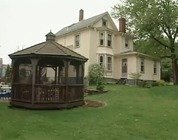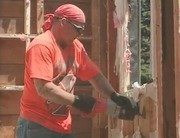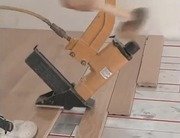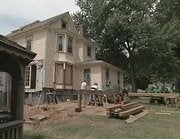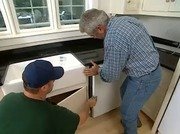Antique Brick Work at the Burtch-Udall House and Sumner Mansion
Bob and Professor Tom Visser (UVM) visit the Burtch-Udall house in Quechee, VT, and the nearby Sumner Mansion-- suitable locales for a running discussion on property restoration and preservation procedures.
Clip Summary
Bob and Professor Tom Visser visit the Burtch-Udall house in Quechee, VT, and the nearby Sumner Mansion-- suitable locales for a running discussion on property restoration and preservation procedures.The brick wall at Burtch-Udall was built in the 1820s with bricks made on-site. It's high-quality sand-struck brick, laid in a standard bond pattern, with headers and nine courses of stretchers.
The wall is two courses of brick thick. The bricks were laid using a lime-and-sand mortar. Looking closely, one can still see the original tooling that was done. The bricks have never been re-pointed or cleaned, yet are still in excellent condition after nearly two centuries.
At the Sumner Mansion, Bob learns more about the proper restoration of, and preservation procedures for, an antique brick home. The original early-1800s brick has been sandblasted, so as to remove the outside fire skin of the brick to reveal the soft inner core.
Because sandblasting damages the brick, the only option afterward is to repoint the brick and repaint it. Care should be taken with masonry sealers, as they can often trap moisture in the wall and lead to accelerate spalling of the bricks.
If you have paint on old brick walls, your best option is to use a commercial paint remover such as a caustic soda, a Peel-Away type product, or even a solvent-based stripper. As for repairing the mortar, very often people patch and re-point using a Portland Cement mortar. This is not a good choice, as it stands out like a sore thumb and is too hard for the bricks, putting stress on them and causing them to fail.
To select the right mortar to use, loosen a sampling of the original mortar with a mason's chisel, crush it with a geologist's mortar and pestle, then dissolve the lime binder with household-distilled white vinegar. What will settle in the bottom of your jar is the sand from which the mortar was originally made. You can then take the sand to a mason, who will match its color and texture and make up new lime-and -and mortar to match the original.
